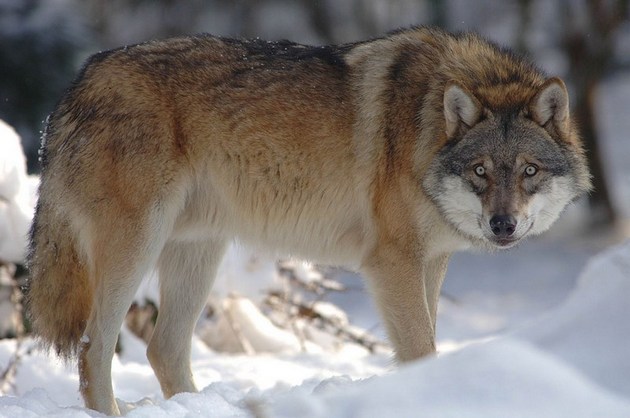Recovery of large carnivores in Europe's modern human-dominated landscapes
Europe is wilder than we think: Wild wolves, bears and lynx are sharing landscapes with humans in many parts of Europe, a new study in Science finds
5.1.2015, LCIE
A new study published in Science finds that large carnivores such as wolves, brown bears, Eurasian lynx and wolverines have made a comeback in one-third of mainland Europe's surface area. This development is widely hailed as a major conservation success.
The article, written by 76 large carnivore experts from 26 countries (including Miroslav Kutal and Martin Váňa from Friends of the Earth Czech Republic), summarized the status of these four large carnivore species across the European continent and the results are remarkably positive. Coordinated by the IUCN's Large Carnivore Initiative for Europe (LCIE), the study finds that in one-third of mainland Europe at least one species of large carnivore is present. This is an excellent example of how humans and carnivores can share the same landscape.

Photo: Karel Brož
The study finds that there are currently 17,000 bears, 12,000 wolves, 9,000 lynx and around 1,250 wolverines. Remarkably, all of the recovered species in Europe occur in areas with high human densities, in landscapes that are highly modified, intensively exploited and fragmented by infrastructure. This is in stark contrast to many other parts of the world, where large carnivores are restricted to national parks and wilderness areas.
"The recovery of large carnivores in Europe is a success story that builds on good legislation, political stability, strong institutions and a favorable public opinion," said Guillaume Chapron, lead author of the study and member of the LCIE. "This is an example of species that have benefited from EU legislation, and it shows that the EU Habitats Directive works."
Most large carnivore populations are now in the process of recovering after a long period of decline in Europe, during which they species were heavily persecuted and suffered from the loss of their forest habitats and wild ungulate prey. By the early 20th century, large carnivores had been exterminated from most of Europe.
Many factors have contributed to their spectacular recovery. The 1992 EU Habitats Directive provided the basis for favourable legislation at regional, national and European levels protecting these species, and this was preceded by an increase in available prey species and a recovery of Europe's forests that provide habitat. In addition, strong institutions have been developed to promote sustainable forest, wildlife and nature management.
The case of large carnivores is a powerful demonstration for the potential of a land-sharing strategy where biodiversity conservation occurs in the same landscapes that people use for living, working and recreation. This success story is encouraging, allowing for ambitious yet achievable conservation goals.
"This European conservation success story has an important message for the rest of the world - that you can sustain substantial wildlife populations even in heavily modified landscapes given the necessary preconditions," said John Linnell, also a member of IUCN's Large Carnivore Initiative. "Clearly we need to preserve the remaining areas of wilderness on this planet, but our results show the enormous wildlife potential that multi-use landscapes retain."
The return of large carnivores has not occurred without conflict, however. Many of the original reasons for human antagonism towards these species, such as their depredation on livestock, are resuming and species like the wolf have become a powerful symbol for wider tensions between rural and urban areas. Failure to address these conflicts could endanger the continuation of this conservation achievement.
Finally, while the general picture is positive, there are some small populations of bears and Eurasian lynx that remain critically small and highly endangered. Reversing the trend for these small populations, and fostering the further recovery of the larger populations will require extensive dialogue with a diversity of stakeholders, coordination between many different sectors such as environment, agriculture, forestry, transport and energy, and transboundary cooperation between all European states.
Chapron m.fl: Recovery of large carnivores in Europe's modern human-dominated landscapes, Science, 19. desember 2014, doi: 10.1126/science.1256620
Read the article summary at http://www.sciencemag.org/content/346/6216/1517
This artilce was published by LCIE and suplementedy by Carnivores.cz




